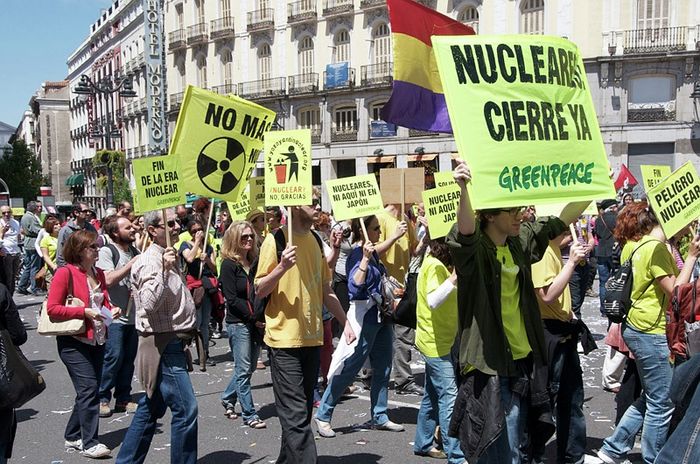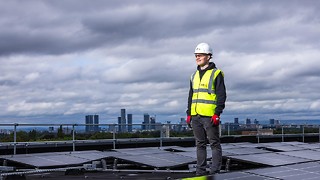The future is nuclear
In response to a recent article, Sam Hudson defends nuclear energy

There has never been an issue so needlessly divisive as nuclear power. Public apprehension may have been unsurprising in the 50s and 60s when the atomic bombings of Hiroshima and Nagasaki still loomed large in public memory and fossil fuels were cheap and sin-free. But the fact that nuclear energy only became more controversial despite growing concern about climate change and is now only beginning to regain favour is one of the great tragedies of recent history.
“Nuclear was brought down by a toxic mix of political shortsightedness, hysterical activists, and lobbying by fossil fuel giants”
A fuel source that is virtually carbon neutral, not location or weather-dependent, and can effectively satisfy existing energy demand is a silver bullet for climate change. Yet bewilderingly there still remains considerable opposition to nuclear energy, especially from the very environmental groups who are meant to be concerned about climate change.
Some may point to nuclear disasters such as Chernobyl and Fukushima as turning points in the fate of atomic power, but at worst these merely expedited the technology’s demise. The construction of new nuclear plants was already in steep decline before Chernobyl and actually increased slightly after Fukushima (though it also led to Germany disastrously decommissioning all of its existing nuclear power plants).
The truth is that nuclear was brought down by a toxic mix of political shortsightedness, hysterical activists, and lobbying by fossil fuel giants. While natural gas and oil prices declined throughout the 1980s, the steep upfront costs of nuclear infrastructure became more and more unpalatable for most countries. Public pressure from “environmentalist” groups who fearmongered over largely unfounded concerns about nuclear safety, and the threat of environmental degradation posed by nuclear waste shifted public opinion further against nuclear. In the background Big Oil had a field day. The one technology that threatened their hegemony was having a public meltdown. Through lobbying politicians and funding anti-nuclear groups, fossil fuel companies ensured that their products would be here to stay.
A couple of decades later and things are looking very different. Even fossil fuel companies themselves now acknowledge that use of their products needs to be reduced. But as shown by a recent Varsity opinion piece, there still remains dogged opposition to nuclear.
Admittedly the piece did much better than rehashing the “worn” and “tired” (their words) arguments against nuclear from the perspective of safety and waste, but I still found the article’s other objections unfounded.
The article’s central concern was that Britain and other Western nations pursuing nuclear power would exacerbate inequality between the West and the Rest. And while it is true that nuclear reactors are prohibitively expensive for less wealthy nations right now, the author makes the age-old mistake of failing to consider that technology can get better.
Most nuclear power plants today use generation II reactor technology. This equipment is, relatively speaking, ancient, with the designs for such reactors dating from the 1960s. This isn’t because we hit some limit with nuclear – indeed, many of the next generation reactors use technology that we were experimenting with as far back as the 1950s. Instead, snubbing investment in nuclear tech during the 1980s led to a tragic stagnation which we are only just recovering from now.
“There is so much we could learn by just going back to the future”
Small modular reactors (SMRs) have been in the news quite a bit recently. And for good reason: SMRs could fundamentally change the way we use nuclear power. These reactors may produce less power than a conventional nuclear power station but are far smaller, cheaper, and completely self-contained. This means they could be deployed to power anything from large towns to energy-hungry buildings. Given SMRs are prefabricated (as opposed to constructed onsite like traditional reactors), economies of scale can be achieved far more easily should production pick up pace, driving down prices further and making nuclear power more accessible to nations which may not otherwise be able to afford it. This is just one example of how British investment in our nuclear industry can significantly help nations in the Global South and why I found the other opinion piece’s objections to nuclear power so puzzling.
SMRs are but the tip of the iceberg when it comes to new nuclear technology. Companies like Transatomic in the US and Newcleo in the UK are designing completely new, next generation reactors that promise to be cheaper, virtually waste-free and meltdown-proof. Transatomic’s new reactors are based on the molten salt powerplants that were being experimented with by the US airforce before the first nuclear power station was even built. These reactors substantially cut down on both the amount and radioactivity of waste left behind. They also physically can’t meltdown and cost less to build than a conventional coal-fired powerplant. It could’ve been possible to have this technology twenty years ago but instead we masochistically waged a war against nuclear power.
Another objection raised against nuclear power by the article was the threat armed violence posed to nuclear reactors. Modern nuclear power plants are built to be virtually indestructible. A power station is considered “unsafe” if it cannot withstand a direct hit by a passenger plane. Barring the use of tactical nuclear weapons or packing the powerstation itself with an enormous amount of explosive, armed violence poses little risk to nuclear power stations. Much of the concern regarding the Zaporizhzhia powerplant in Ukraine stems not from the chance of incidental fire hitting the plant but the fact that Russia has stashed explosives within the plant itself. And even so, it’s still unlikely that there is enough explosive to cause an accident. So while the war in Ukraine has shown there is no limit to the evil or stupidity of Russian command, a nuclear accident as a result of the war still remains remote thanks to the safety of nuclear technology.
In 1953, President Eisenhower gave his “Atoms for Peace” speech, outlining an optimistic and inclusive vision for nuclear technology. Under the Atoms for Peace programme, America would supply nuclear technology and expertise to many countries, including those in the Global South, such as Pakistan who received their first nuclear reactor courtesy of the programme. Ten years after Eisenhower’s speech, Harold Wilson promised to forge a new Britain in the “white heat of the technological revolution” and founded the ministry of technology when he won the 1964 election. Ultimately both visions were killed by paranoid luddites and visionless Tories respectively. But they don’t have to stay dead. There is so much we could learn by just going back to the future.
 News / Sidney May Ball cancelled6 November 2025
News / Sidney May Ball cancelled6 November 2025 News / Students launch women’s society excluding trans women31 October 2025
News / Students launch women’s society excluding trans women31 October 2025 News / Climate protesters rally against the Careers Service5 November 2025
News / Climate protesters rally against the Careers Service5 November 2025 News / New Christ’s library approved4 November 2025
News / New Christ’s library approved4 November 2025 Theatre / Hitler at the ADC? These guys pull it off5 November 2025
Theatre / Hitler at the ADC? These guys pull it off5 November 2025











